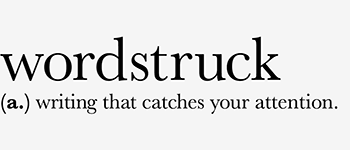As a copywriter, I write for many different businesses. Here are my top ten tips for improving your writing, whether you’re communicating for business or writing for pleasure.
1. Begin with one grain of sand
In other words, you have to start somewhere. So state your purpose and outline what you’re trying to do. I often find it helps to start with a statement of what I’m trying to do: e.g ‘Write an email to let customers know about this week’s special offers’. Or to start by finishing a sentence e.g. ‘My customers would like to…’
You may not use these words in your finished communication, but they can help you to get over the fear of the blank page.
2. Be a reporter
Ask the questions who, what, where, when, how and why? And answer them. These are the questions that have served me well through my years working at the BBC and then as a copywriter for big business. They will help you get the facts and structure your story.
 When it comes to writing clear communications, imagine you’re writing for a quality newspaper or news website.
When it comes to writing clear communications, imagine you’re writing for a quality newspaper or news website.
Don’t pack everything into the first sentence. Start with the most important piece of information, then add to it. Try to stick to one idea per sentence or paragraph.
3. Just do it (no critics allowed)
The best way to write something is just to write it. Banish your inner critic.
No one gets to read your first draft anyway. No one cares if it’s spelt wrong or you missed an apostrophe at this stage. Just get on and do it. You can go back and refine things later.
4. Be active
Choose the active, rather than the passive voice eg. ‘I am doing this’, rather than ‘this is being done’.
It makes you sound more involved, interested and less shifty.
5. Sell the sizzle
Every time we write in business we’re trying to get a response. It’s not just about increasing our sales (though that’s a distinct advantage), but also about how people feel about doing business with us. So we have to write persuasively and that means talking about benefits not features. Answer the question ‘What can it do for me?’
Think about perfumes – their feature is they make you smell nice, but they’re sold on the benefit that smelling nice will encourage the object of your admiration to fall at your feet. Answer the question ‘What can it do for me?’
6. Leave it
 It’s easy, particularly when you know your subject really well to get wrapped up in what you’ve written, to lose perspective. Take some time to away from it and come back with new eyes.
It’s easy, particularly when you know your subject really well to get wrapped up in what you’ve written, to lose perspective. Take some time to away from it and come back with new eyes.
It can be as little as a few minutes while you make a phone call, grab a coffee, whatever – but try to read it as though you’ve never seen it before.
I’ve found it really helps to read things backwards, starting at the end and working back to the beginning. You may realise there’s a better place to start.
7. Prune it
Read through what you’ve written and look for places where you may have repeated yourself.
Look for the businesses and doublespeak; the handy jargon and short cuts we might use everyday but that make little sense outside our own circle. Cut big, then cut small.
Pruning also means you have to let some areas grow. Sometimes it might be better to take a couple of sentences to describe what something does instead of referring to what it’s called.
So rather than telling me it’s a personal GPS system, you might want to describe it as a gadget that helps you pinpoint exactly where you are.
8. Map it
Help your reader out by signalling where you’re going.
- New paragraphs help single out thoughts.
- Bullets and lists are great for drawing attention to things – and they’re easy to read.
- Subheadings help the reader to skim through to key points of interest, or to pick up reading from where they left off
9. Check it
Ideally you shouldn’t proofread your own copy, but in reality most of us have to. Use your spell check if it’s an electronic document (make sure you’ve chosen English dictionary), but remember it’s not infallible. Take the time to read it through again.
Read it aloud. Start from the end. Turn the paper upside down. Read every word one by one. If you spot a mistake, look for the one next to it.
10. Test it
Does your piece of writing do what you set out to do? Get a second opinion. Does your tester understand it? Did they encounter any mental speed bumps? Bits where they had to go back and read it again? Did they spot any errors?
There are lots of tools that help you track digital communications these days, so you can see how well your email, website, or even social media is engaging with your customers. Is there a keyword or phrase that works well for you. what time of day are your customers most responsive. Take note of your analytics and look at areas where you could improve in future.

Comments are closed.